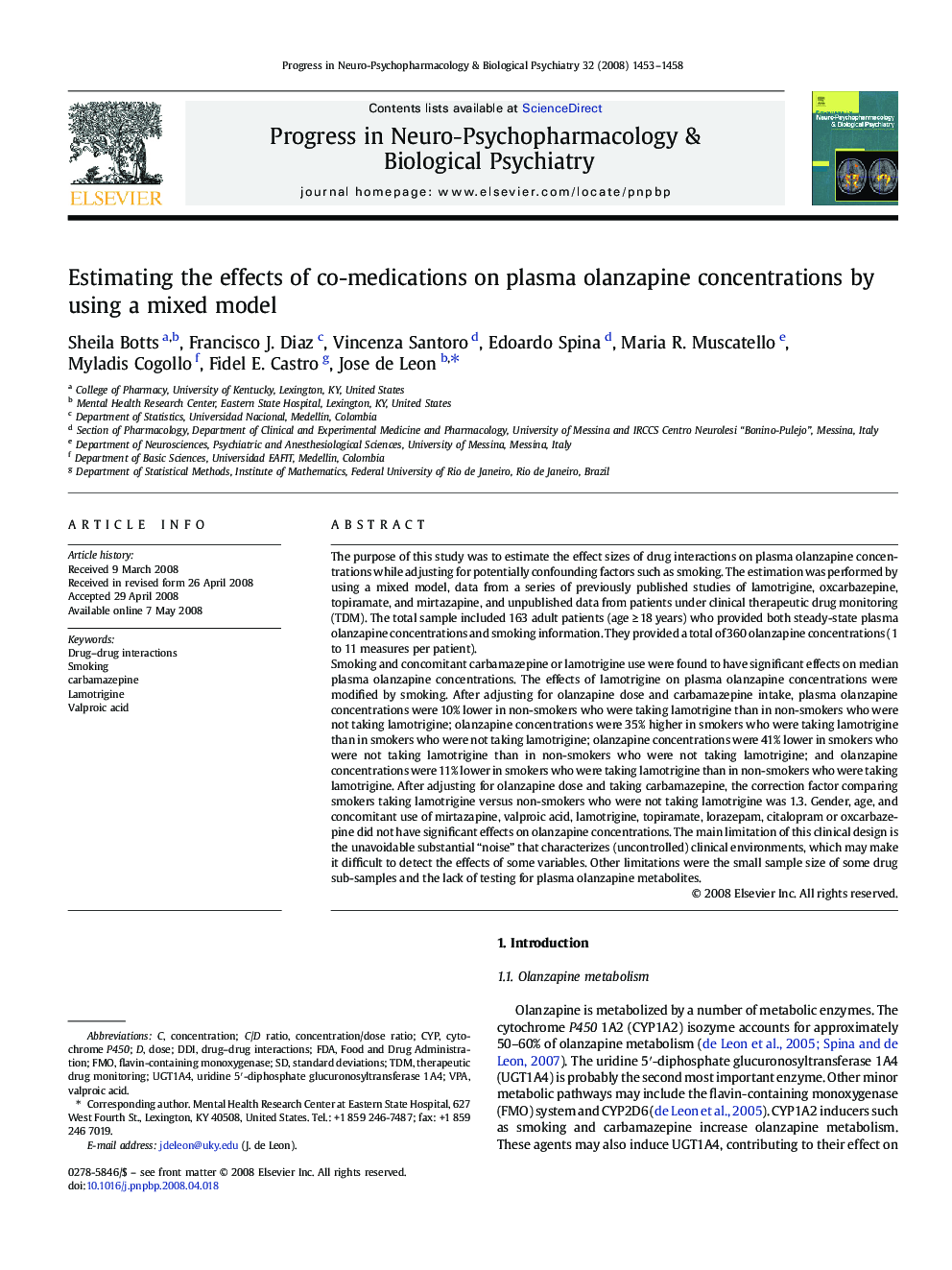| Article ID | Journal | Published Year | Pages | File Type |
|---|---|---|---|---|
| 2565612 | Progress in Neuro-Psychopharmacology and Biological Psychiatry | 2008 | 6 Pages |
The purpose of this study was to estimate the effect sizes of drug interactions on plasma olanzapine concentrations while adjusting for potentially confounding factors such as smoking. The estimation was performed by using a mixed model, data from a series of previously published studies of lamotrigine, oxcarbazepine, topiramate, and mirtazapine, and unpublished data from patients under clinical therapeutic drug monitoring (TDM). The total sample included 163 adult patients (age ≥ 18 years) who provided both steady-state plasma olanzapine concentrations and smoking information. They provided a total of 360 olanzapine concentrations (1 to 11 measures per patient).Smoking and concomitant carbamazepine or lamotrigine use were found to have significant effects on median plasma olanzapine concentrations. The effects of lamotrigine on plasma olanzapine concentrations were modified by smoking. After adjusting for olanzapine dose and carbamazepine intake, plasma olanzapine concentrations were 10% lower in non-smokers who were taking lamotrigine than in non-smokers who were not taking lamotrigine; olanzapine concentrations were 35% higher in smokers who were taking lamotrigine than in smokers who were not taking lamotrigine; olanzapine concentrations were 41% lower in smokers who were not taking lamotrigine than in non-smokers who were not taking lamotrigine; and olanzapine concentrations were 11% lower in smokers who were taking lamotrigine than in non-smokers who were taking lamotrigine. After adjusting for olanzapine dose and taking carbamazepine, the correction factor comparing smokers taking lamotrigine versus non-smokers who were not taking lamotrigine was 1.3. Gender, age, and concomitant use of mirtazapine, valproic acid, lamotrigine, topiramate, lorazepam, citalopram or oxcarbazepine did not have significant effects on olanzapine concentrations. The main limitation of this clinical design is the unavoidable substantial “noise” that characterizes (uncontrolled) clinical environments, which may make it difficult to detect the effects of some variables. Other limitations were the small sample size of some drug sub-samples and the lack of testing for plasma olanzapine metabolites.
